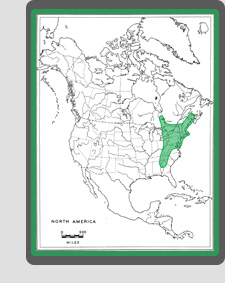
General & Similar species
Of those Clusiodes in eastern North America with three dorsocentrals and distally white fore tarsi, C. johnsoni is by far the most common and widespread. The relatively uncommon eastern species C. americanus and C. apiculatus resemble C. johnsoni but differ in having dark (not white) shoulders, entirely yellow fore femora (not with an inner-distal spot) and slender male vibrissae (usually stout in C. johnsoni). Clusiodes americanus differs from C. apiculatus by having well-developed (as opposed to minute to absent) postverticals, a medially yellow (as opposed to brown or with a yellow anterior stripe) notum, and yellow hind tibiae (in other species the tibiae are brown, at least laterally near the base). The surstylus is also relatively short and round rather than long and strongly pointed, but not nearly as broad or rounded as that of C. johnsoni.
Melander & Argo (1924) thought that Clusiodes americanus might be a variant of C. johnsoni, but the dark notal colouration and significantly different male genitalia (including pointed surstyli) suggests that C. americanus is a distinct species.
